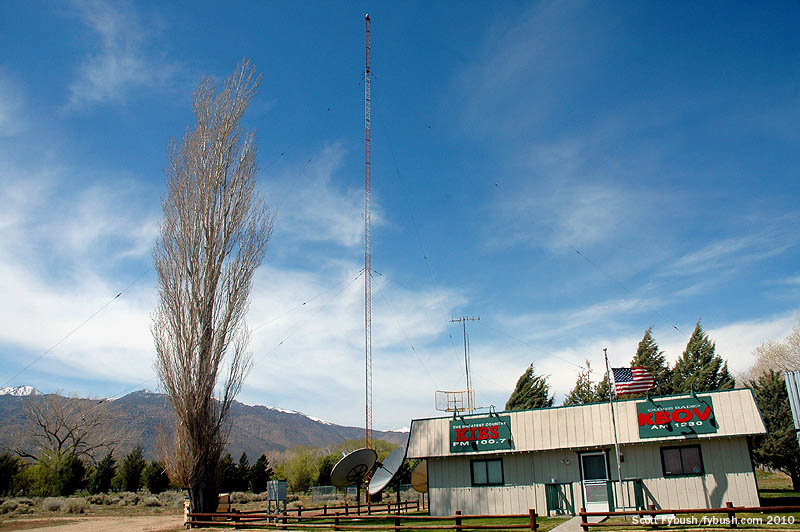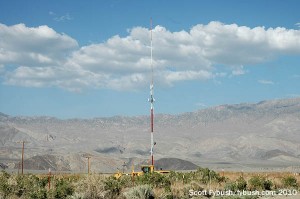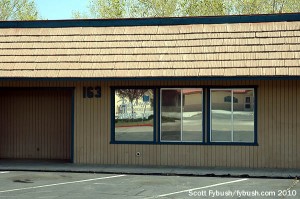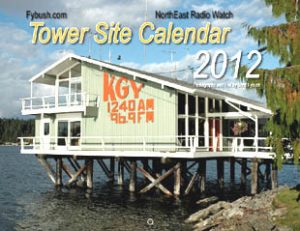NorthEast Radio Watch 12/8/2025: Cichon’s Back in Buffalo
In this week’s issue… Veteran newsman returns - Remembering NY's Leitner, RI's Jones - CT AM saved - Maine AM moves - "Indie" adds suburban signals
This week”s Site of the Week installment is something of a long-delayed homecoming for your editor, who spent a year in the late 1980s living in an isolated desert valley near the California/Nevada border.

It was the summer of 1989 when we last laid eyes on Inyo County, California – and it took more than two decades to find an excuse to get back for a return visit. Our excuse for an April 2010 visit was the usual one for any excursion around that time out west: a long, looping path that ended up in Las Vegas for the NAB Show – but this time, after the usual few days in Los Angeles (you”ll see those images here soon), we headed north up California 14 and US 395 to spend a weekend in and around the Owens Valley.
Even if you”re from California, the odds are pretty good you”ve never heard of the Owens Valley: it”s four-plus hours north of LA, three-plus hours south of Reno and separated by the Sierra Nevadas from the rest of California to the west and by the White Mountains from the rest of Nevada to the east. If you have heard of the Owens Valley, it”s probably as the place you drive through to get to the Mammoth Mountain ski area, or perhaps as the spot where Japanese-Americans were interned during World War II.
It”s a sparsely-populated area, having had its water effectively stolen by Los Angeles around the turn of the last century, but there are a few commercial centers along 395: Lone Pine and Independence to the south, Big Pine and Bishop to the north. Bishop is by far the largest community in the valley, though still shy of 4,000 people, and for many decades it was the only spot in the valley with its own broadcast service.
In our Owens Valley days, Bishop radio came from just one outlet, a little building on the west side of 395 just south of town that was home to an AM/FM combo, KBOV (1230) and KIBS (100.7). A bit of history is in order here: it”s the KIBS calls that have the long heritage in Bishop, debuting in 1953 on the AM dial. In 1967, KIBS added an FM signal on 100.7 in 1967, running 14 kW from the AM tower, but it lasted only two years. In 1974, the FM frequency was reactivated, this time as a competitor to KIBS. KIOQ was founded by former KIBS jock Roy Mayhugh in his Bishop garage, and it struggled for a few years before finding its footing with a move to a huge signal from a site called Silver Peak, up in the White Mountains to the east of Bishop. With 1000 watts from 2959 feet above average terrain, the new 100.7 signal covered hundreds of miles of US 395 where no local radio had been heard before.
In 1985, KIBS(AM) owner John Young bought out KIOQ, moving the FM station into the AM building, renaming the FM station KIBS and placing the KBOV calls (“Beautiful Owens Valley”) on the AM station. The new KIBS-FM dominated the valley with its country format, and when your editor was living 40 miles away on the other side of the Whites, it was the only really listenable signal on the dial at all during the day.
I wish I had pictures from my visits to KIBS/KBOV in 1988-89, but it”s OK that I don”t: give or take an automation computer or two, the building was little changed two decades later. It was a Saturday afternoon when we pulled up in Bishop, but the door was open and John Young was on the air with his country oldies show. (He sold the stations in 1995 but continues to do their engineering and host the country oldies.)
It”s a pretty straightforward small-town operation: a lobby in front with a sales office to the right and studios to the left, a big one for KIBS-FM and a smaller one adjacent to it that”s a news booth and KBOV(AM) studio. (The AM runs a satellite-based oldies service most of the time.) Behind the AM studio is the transmitter room, where we found a vintage Continental and a newer Armstrong in the rack next to it.
The AM tower is out back, and we”ve still never been up to the FM transmitter site, nearly 11,000 feet above sea level high above the ancient bristlecone pines on Silver Peak.
In the decades since we headed back east, the Bishop/Owens Valley radio dial has grown considerably.
KSRW (“Sierra Wave”) started out as a class A construction permit on 106.3 in Independence, 40 miles to the south, but it signed on in 1996 as a class B signal on 92.5 from Mazuorka Peak, in the White Mountains between Independence and Big Pine. It runs a mostly-automated AC format from studios on the north side of Bishop that it shares with KSRW-LP (Channel 33), which transmits from that tower out behind the studio.

(Fun fact #1: the KSRW building on Wye Road sits almost precisely at the western terminus of US 6, where the long, long transcontinental highway now ends at US 395; until the 1970s, US 6 continued down 395 and CA 14 into Los Angeles.)
(Fun fact #2: Long before KSRW came along, Independence had an AM station for a few years, a daytimer on 600 known over the years as KINC, KNYO and KESR. The station went dark around the time your editor was living out there; its tower was still standing in 2010, just off 395 between Independence and Lone Pine. At one point, it was owned by well-known Los Angeles engineer Burt Weiner.)
Religious broadcaster Living Proof, affiliated with the Calvary Chapel organization, put KWTW (“Winning the West”) on the air at 88.5 in 2002. It eventually became the hub of a network that now extends as far afield as Fort Bragg, on the coast up north of San Francisco, and it all emanates from a former Bank of America branch on 395 in downtown Bishop.
In 2004, classic rock KRHV (93.3 Big Pine) took to the air. Like KWTW, its class B signal comes from up at Silver Peak alongside KIBS; its studios are up in Mammoth, an hour to the north, shared with sister station KMMT (106.5).

KMMT itself doesn”t reach Bishop very well, but there”s a mystery translator in town on 102.3 that relays its rock format. Other translators in Bishop bring in Reno public broadcaster KUNR and religious broadcaster KNIS, and KIBS itself is relayed by its own extensive translator network that extends up and down the valley and into the very rural parts of Nevada on the fringe of the Silver Peak main signal.
And there”s a TV station here, sort of. KBBC (Channel 20) is licensed up on Silver Peak (though we didn”t see it on the air in April 2010) – but its real purpose in life is to assert local cable carriage in Los Angeles. Yes, downtown LA is more than 250 miles away, but a long history of translator and cable service makes Inyo County part of the Los Angeles TV market, where KBBC aims its programming. It”s mostly in Spanish, and it”s also seen (or perhaps “mostly seen”) on a low-power TV, KNLA-LP (Channel 27), on Mount Harvard above LA.
There”s actually a KBBC studio location in Bishop, way out on the west side of town in a little office park. Nobody was at home that Saturday when we stopped by. Perhaps we”ll see more of KBBC on our next Bishop visit, for which we don”t intend to wait another 21 years.
Thanks to John Young for the tour – and for remembering your editor after 21 years!
 KIBS/KBOV will be in a future Tower Site Calendar – but in the meantime, don”t miss your chance to order the all-new Tower Site Calendar 2012, available now from the all new Fybush.com store!
KIBS/KBOV will be in a future Tower Site Calendar – but in the meantime, don”t miss your chance to order the all-new Tower Site Calendar 2012, available now from the all new Fybush.com store!
And check out our sister site, Tophour.com, beginning Wednesday, January 18, for Bishop/Owens Valley legal IDs…
Next week: Ridgecrest, California
In this week’s issue… Veteran newsman returns - Remembering NY's Leitner, RI's Jones - CT AM saved - Maine AM moves - "Indie" adds suburban signals
In this week’s issue… Scripps stations face takeover - Sinclair moves more affiliations - CT stations sold - Maine AM surrendered - Remembering WVBR's Shapiro, WABC's Morgan
In this week’s issue… CT TV legend succumbs to cancer - Remembering PA's Adams - FCC still stalled by shutdown - Pittsburgh morning host exits
In this week’s issue… FCC faces reopening challenges - Veteran Boston anchor retires - Morning shift in Toronto - NYC FMs expand reach